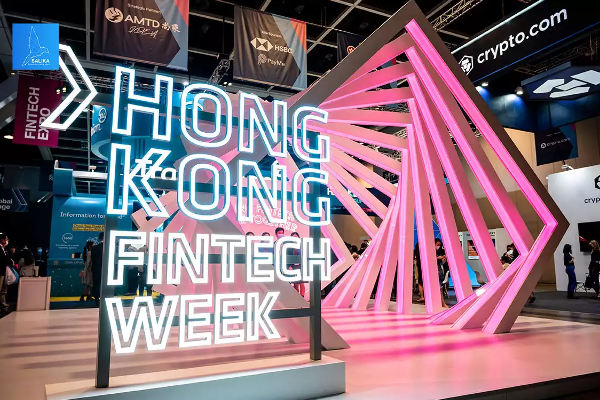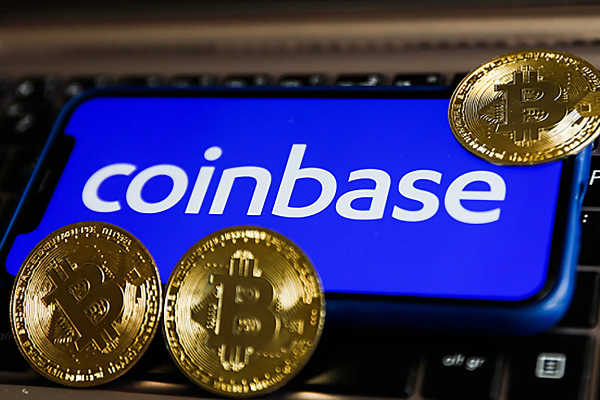In-depth analysis of Berachain’s liquidity proof mechanism

With the official launch of @berachain’s Proof-of-Liquidity (POL) mechanism led by @SmokeyTheBera and @codingwithmanny, this post aims to provide readers with the most comprehensive overview of the POL mechanism and explore its potential impact on the entire ecosystem, especially the price of the $BERA token. The article covers the basic mechanism, issuance plan, token economics model (Tokenomics), and strategies and techniques for absorbing the highest inflationary reward sources.
@berachain’s Proof-of-Liquidity (PoL) mechanism aims to solve the incentive mismatch problem of consensus mechanisms in traditional Proof-of-Stake (PoS) blockchains. In traditional PoS mechanisms, users need to lock up assets in exchange for staking rewards. However, this model leads to incentive mismatch because DeFi projects built on these blockchains also need assets and liquidity, thus directly competing with the PoS mechanism for asset usage rights. PoL restructures the incentive mechanism to prioritize DeFi activities over asset locking while enhancing the security and decentralization of the network.
Basic Mechanism
There are two core native assets in the Berachain ecosystem: $BERA and $BGT:
$BERA
$BERA is the gas and staking token in the ecosystem; it is responsible for validator selection (see below for details).
$BGT
$BGT is a governance token (non-transferable) that can be exchanged for $BERA at a 1:1 ratio;
It also determines the economic incentives or token issuance that can be allocated to the whitelisted dApp reward vaults.
It is worth noting that $BGT can be exchanged (or destroyed) for $BERA at a 1:1 ratio, but $BERA cannot be converted back to $BGT.
Note: Validators will receive higher rewards when producing blocks if they hold more $BGT. However, whether a validator is eligible to be selected to produce blocks to receive these rewards depends entirely on the amount of $BERA they stake.
Unlike traditional PoS (Proof of Stake), in Berachain, validators do not directly receive rewards from the blockchain by validating transactions, nor do delegators receive a portion of the rewards based on their staked shares. In Berachain, validators are rewarded through $BGT ($BGT is minted by the BlockRewardController contract and sent to the Distributor smart contract). But validators must allocate most of the $BGT directly to the reward vaults of whitelisted dApps. Under this mechanism, protocols will compete by bribing validators, which are usually provided in the form of various tokens (usually the native tokens of the protocol) and set different incentive ratios based on the emission of each $BGT. The more attractive the bribe, the more likely the validator will allocate their $BGT to the reward vault of the decentralized application (dApp) that offers the highest bribe.
Validators tend to allocate $BGT to the reward vault of the dApp that offers the highest bribe. For example, users can provide liquidity to certain liquidity pools in the native decentralized exchange (DEX) to earn LP fees, and then deposit LP tokens into the reward vault of a specific trading pair to receive additional $BGT rewards. Users can choose to delegate the $BGT they earn to a validator or stake $BERA, thereby increasing the $BGT emission of the validator.
As POL is now live, more whitelists are available:
$BGT delegation: Validators can actively or passively decide which reward vaults to allocate $BGT emissions to based on the amount of bribes provided by dApps. As a delegator, users can choose the delegation object based on the validator's strategy and expected returns. Those validators that can bring the highest returns to delegators tend to attract more $BGT delegations.
$BERA staking: Stakers contribute to the self-bond of the validator and can therefore receive a portion of the $BGT and $BERA rewards earned by the validator.
Block Production and $BGT Emission Mechanism
Validator Selection Criteria: Only the top 69 validators with the most $BERA staked are eligible to participate in block production (minimum stake of 250,000 $BERA, maximum stake of 10,000,000 $BERA). The probability of a block proposal is proportional to the amount of $BERA staked, but this does not affect the $BGT emission allocated to the Reward Vault.
$BGT Emission: This part is important because the amount of $BERA locked depends on how the formula is designed.
$BGT emission consists of two parts: Base Emission and Reward Vault Emission. Base Emission is fixed (currently 0.5 $BGT per block) and is paid directly to the block producing validator. Reward Vault Emission is closely related to "boost", which is the proportion of the validator's $BGT delegation to the total delegation of the entire network. The greater the weight of the incentive boost, the more significant the impact of the reward vault emission.
In short, validators who stake more $BERA are more likely to be selected to produce the next block; validators who delegate more $BGT will receive more $BGT emissions and allocate them to different reward treasuries, thereby obtaining more incentives (usually in the form of tokens) provided by the protocol through the reward treasury.
In block production, the top 69 validators participate in block production through $BERA staking qualifications and allocate $BGT emissions to the reward treasury. The protocol provides bribes to validators through the reward treasury, and validators distribute rewards according to the commission rate, and the remaining part is distributed to delegators according to the incentive rate per 1 $BGT. The $BGT in the reward treasury eventually flows to users who provide liquidity to the corresponding liquidity pool. After these users obtain non-transferable $BGT, they can choose to delegate it to validators to earn bribe income from other protocols, or directly exchange it for $BERA for immediate profit.
The scale of PoL in the early stage of launch
In the Berapalooza 2 event, the amount of bribes exceeded $500,000 in the first 24 hours of RFRV submission alone. If this momentum continues and doubles before PoL goes live, weekly bribes could reach $1 million, which would inject huge incentives into the Berachain ecosystem.
Meanwhile, Berachain emits 54.52M $BGT per year, or about 1.05M $BGT per week. Since 1 $BGT can be exchanged for $BERA at a 1:1 ratio, and the current price of $BERA is $8.43, this means that Berachain distributes about $8.8 million worth of incentives per year. Of this, only 16% of the emission is directly allocated to validators, and the remaining 84% (about $7.4 million/year) is allocated to the reward treasury. Therefore, for every $1 million in bribes, the protocol may receive $7.4 million worth of $BGT incentives, which is a very high return on investment.
How Bribery Improves Capital Efficiency
For protocols, this bribe-based model is a game changer. Instead of spending a lot of money to attract liquidity, the protocol can multiply the incentive effect through the bribe mechanism.
For users, this means a very high annualized rate of return (APY) in the first few weeks of PoL. As protocols compete to attract liquidity, they will offer higher $BGT rewards, creating incredible "farming" opportunities. If you want to maximize your gains, now is the best time to prepare, calculate, and catch the wave of Berachain PoL incentives.
Self-driven ecological flywheel
Berachain's ecosystem forms a positive feedback loop: more $BGT is delegated due to bribes, and more $BGT incentives are used to start liquidity of trading pairs, attract more liquidity pool funds, reduce slippage, and promote trading volume growth, thereby increasing platform fee income. This further attracts more $BGT to be discharged to the corresponding pool, forming a self-sustaining growth flywheel.
Berachain's Proof of Liquidity (PoL) mechanism forms a self-reinforcing cycle:
More liquidity → users get more rewards
More $BGT delegation → validators get more incentives
More validator incentives → higher network security and DeFi ecosystem growth synergy
PoL creates a positive-sum economy
Unlike traditional staking mechanisms, PoL not only improves capital efficiency, but also continuously expands Berachain's economic activities. Its operation mode is as follows:
Users provide liquidity → get $BGT → delegate $BGT to validators;
Validators allocate emissions → incentivize DeFi protocols;
More liquidity → attract more users → provide more rewards → repeat the cycle.
Why is this important?
More liquidity: improve trading conditions, reduce slippage, and deepen the lending market.
Blockchains with stable and growing liquidity are more attractive to developers.
This flywheel effect ensures that as liquidity enters the ecosystem, it can attract more users, developers, and capital, thereby enhancing the long-term security and sustainability of the network.
The "magic" of Berachain's token economics
No matter how each team designs and expresses the token economic model, its core point ultimately comes down to one thing: minimize selling pressure and optimize the process of initial capital accumulation. This can be analyzed from two dimensions:
Inflationary faucets
$BGT is partially exchanged for $BERA (part of the exchange is because the funds obtained from the exchange are subsidized by the incentive tokens of other protocols in the Bera ecosystem).
Deflationary Sinks
$BERA is staked to obtain block production qualifications and increase the probability of being selected to produce the next block;
$BGT is delegated to validators to obtain higher returns;
The irreversibility of $BGT redemption (especially when $BGT is not available in the secondary market, this mechanism is a deterrent to holders' selling);
The PoL mechanism activates more liquidity, reduces slippage, and promotes higher trading volume, thereby generating more fees and further enhancing the deflationary effect.
In the traditional PoS (Proof of Stake) staking model, the selection of validators and the increase in rewards are usually determined by the number of staked native tokens relative to the total staked amount. And here is a clever design: by separating gas fees and security staking from governance and economic incentives, the key is to give the distribution function of economic incentives to a token that lacks liquidity. This design raises the threshold for obtaining economic incentives (i.e. people cannot simply obtain tokens through the secondary market), thereby suppressing the motivation of holders to sell on a large scale.
Take voting lock tokens (such as $veCRV) as an example, but $BERA goes a step further - while $veCRV can be converted from $CRV, and $CRV can be purchased on the secondary market, $BGT can neither be obtained through the secondary market nor converted from $BERA. This design has a stronger inhibitory effect on $BGT holders: if users holding a large number of $BGT soulbound tokens choose to sell most of their tokens, they will face a very high threshold when they hope to regain economic incentives when the ecological project develops. They must provide liquidity to the liquidity pools of certain trading pairs (associated with the whitelist reward vault) to regain $BGT and enjoy economic incentives.
In addition, it is worth noting that Berachain's dual-token separated PoS model: validators must stake $BERA, but this only determines their eligibility to participate in block production. Therefore, validators need to stake more $BERA to increase the probability of producing the next block. At the same time, validators also need to obtain more incentive tokens from the protocol to attract $BGT delegators and strive for more $BGT delegations. This dynamic mechanism can produce a strong deflationary effect and effectively absorb the huge selling pressure caused by the initial high-inflation $BGT emission plan. The reason is that in order to increase the probability of producing blocks, validators must continue to stake more $BERA; and users also need to hold and delegate $BGT in order to obtain high returns.
However, a fatal risk that can be thought of at present is that if the intrinsic value of $BERA exceeds the income of $BGT, then $BGT holders may choose to queue up to redeem and sell $BERA. The realization of this risk depends on a game dynamic, that is, $BGT holders need to judge whether the profit of holding $BGT for income is higher than the income of directly redeeming and selling $BERA. This further depends on the prosperity of the Bera DeFi ecosystem-the more competitive the incentive market, the higher the yield of $BGT delegators, thereby reducing the possibility of this risk.
Infrared Finance - A leading liquid staking protocol with over $2 billion TVL
In simple terms, it offers $iBGT and $iBERA, liquid versions of staking $BGT and $BERA respectively, allowing users to earn staking rewards while still maintaining liquidity for other DeFi activities, such as trading on decentralized exchanges (DEX) or participating in lending markets.
$iBGT is backed by $BGT at a 1:1 ratio, and it is worth noting that unlike the soulbound nature of $BGT, $iBGT can be directly transferred. @InfraredFinance operates as a validator, allowing users to deposit PoL assets into the vault to earn $iBGT, which can be used in Berachain's DeFi ecosystem. Users can also choose to further stake $iBGT to obtain the staking version of $iBGT (i.e. $siBGT), thereby capturing the yield of $BGT. $siBGT can amplify the returns from $BGT because $iBGT holders choose liquidity over returns, a choice that has a multiplier effect on the returns of $siBGT holders. At the same time, $iBGT aims to establish its monetary premium, reflecting its potential utility as a liquidity token.
While not wanting to dive into the details of every protocol in the ecosystem, it can be seen from Bera's design that it is very DeFi-centric. Since the collapse of the Luna ecosystem, it will be worth watching whether @AndreCronjeTech's @soniclabs and Bera can restore DeFi to its former glory.









